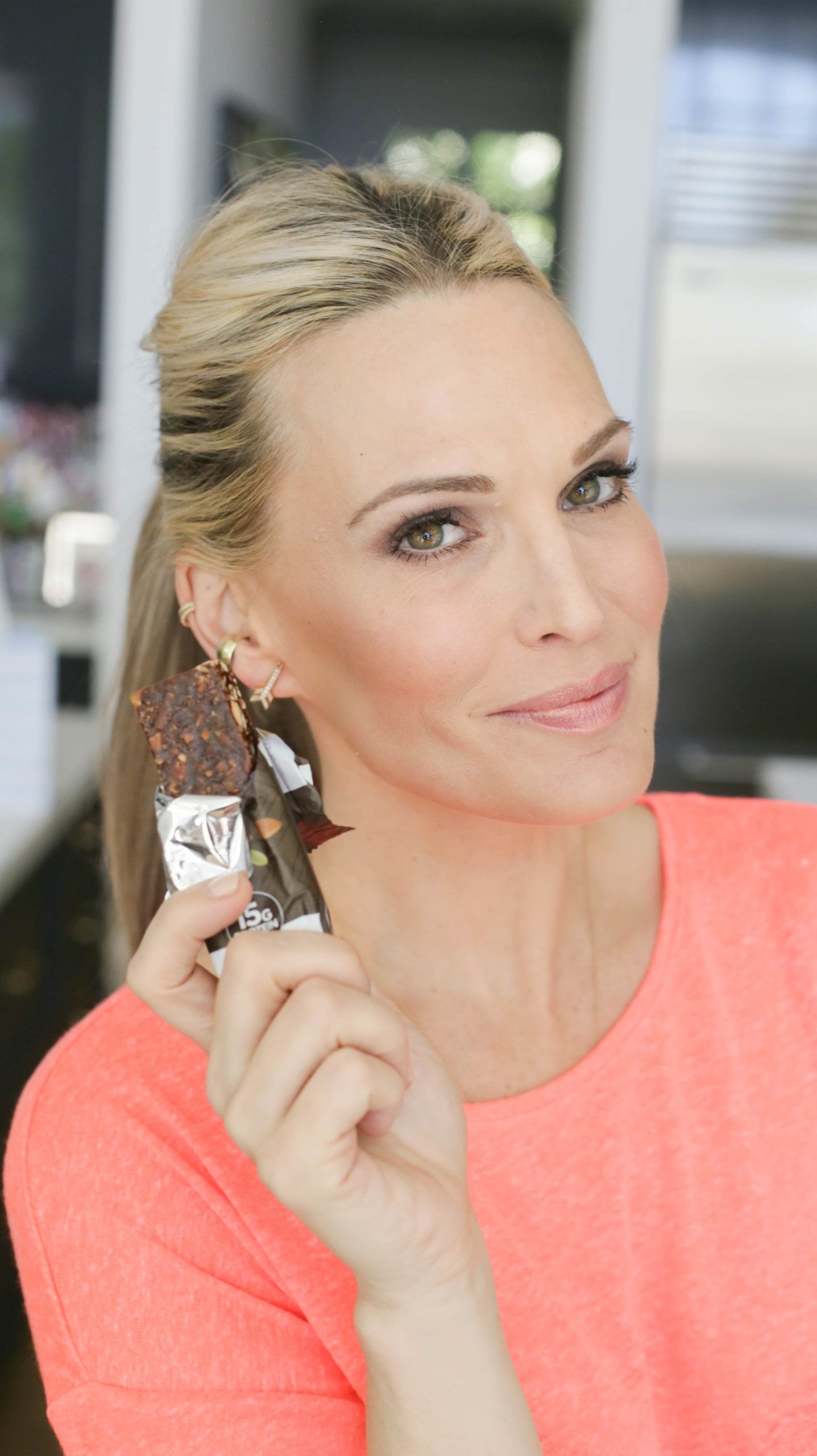Beauty...

When I first started working with Kelly, she took one look at my protein bars and threw them in the trash. No, she’s not a monster! All of my options were actually really, really high in sugar. I was eating protein bars to give me a boost of energy when I needed it but the sugar was making me crash. I seriously had no idea. There are so many choices at the store but how do you know which one to pick!?
That’s where Kelly came in. She ended up replacing them with some healthier options.
Read below for Kelly’s tips on how to pick the right protein bar:
Nothing will compare to a real meal of fresh produce, wild proteins, and healthy fat but sometimes a quick convenient protein bar will help you get through after school pickup, a road trip or a long flight. Unfortunately, not all protein bars are created equal so it’s important you know how to pick the perfect bar.
Here is a quick checklist to choose your next protein bar:
1. Ingredients:
Per food labeling laws, the ingredients in your protein bar are listed in order of amounts; the first ingredient on the list has the highest weight and the last has the lowest weight. You should ideally know every ingredient in your bar, but at least the majority. Further, avoid bars that have sugar in the first few ingredients, and remember sugar can come in many forms including brown rice syrup, dried cane syrup, tapioca syrup, chicory fiber syrup, fructose syrup, beet syrup, corn syrup, molasses powder, glucose syrup, honey, agave and even dates. Preferably, your “protein bars” ingredients should start with protein.
2. Net Carbs:
A quick way to determine what of your food will break down to sugar is to subtract fiber from carbohydrates. Fiber is fermented by your gut bacteria or passes through your body instead of spiking your blood sugar so the higher in fiber the lower in glucose, and the less blood sugar your body needs to store. Take a look at your label and ensure the net carbohydrates grams are less than the grams of protein and fat. This quick trick helps ensure your bar is mostly protein, fat, and fiber not a blood sugar bomb that will make you crave more sugar later.
3. Protein Source:
The protein should come in the form of protein isolates like rice, pea, collagen or whey protein. Avoid soy isolate protein it is loaded with phytoestrogens and 90-95% produced in the United States is GMO. If you want to avoid isolates all together and eat more whole foods look for protein bars that include almonds, walnuts, cashew butter, egg whites, almond butter, peanut butter, sunflower seeds and pumpkin seeds. The good news, most of these also provide fiber and healthy fats. If the bar is a snack aim for 10-15 grams of protein, meal replacement bars should average 20 grams or more to calm hunger hormones.
4. Fat Source:
Avoid industrial seed oils such as palm kernel, cottonseed, soybean oil, safflower and sunflower oil oxidize easily and are almost exclusively omega 6, both of which are inflammatory and can throw off the omega 3 to 6 ratio in your body leading to inflammation and elevated cortisol levels. Chronic inflammation can lead to weight gain, an inability to lose weight and stress on the body.
Kelly’s Protein Bar Picks:

Bulletproof Collagen Protein Bars
For more of Kelly’s #BikiniReadyTips, check out these links:
My Hacks To Eat Healthy At Home // Healthy Swaps While Eating Out // Healthy Swaps While Traveling // Healthy Carbs Decoded // Healthy Proteins Decoded